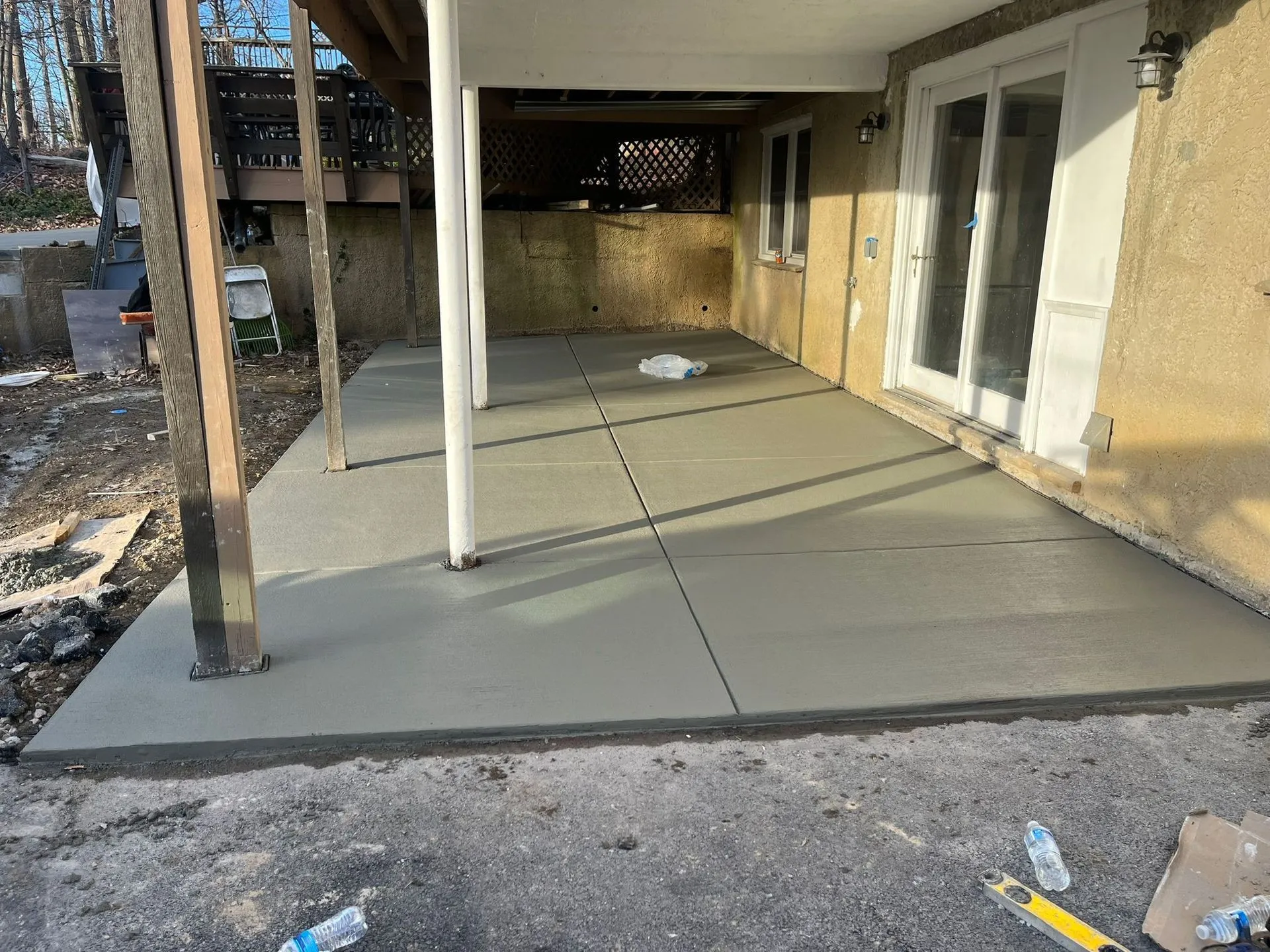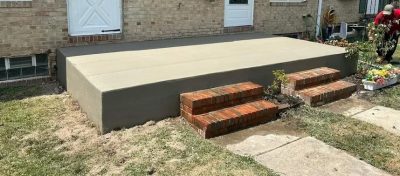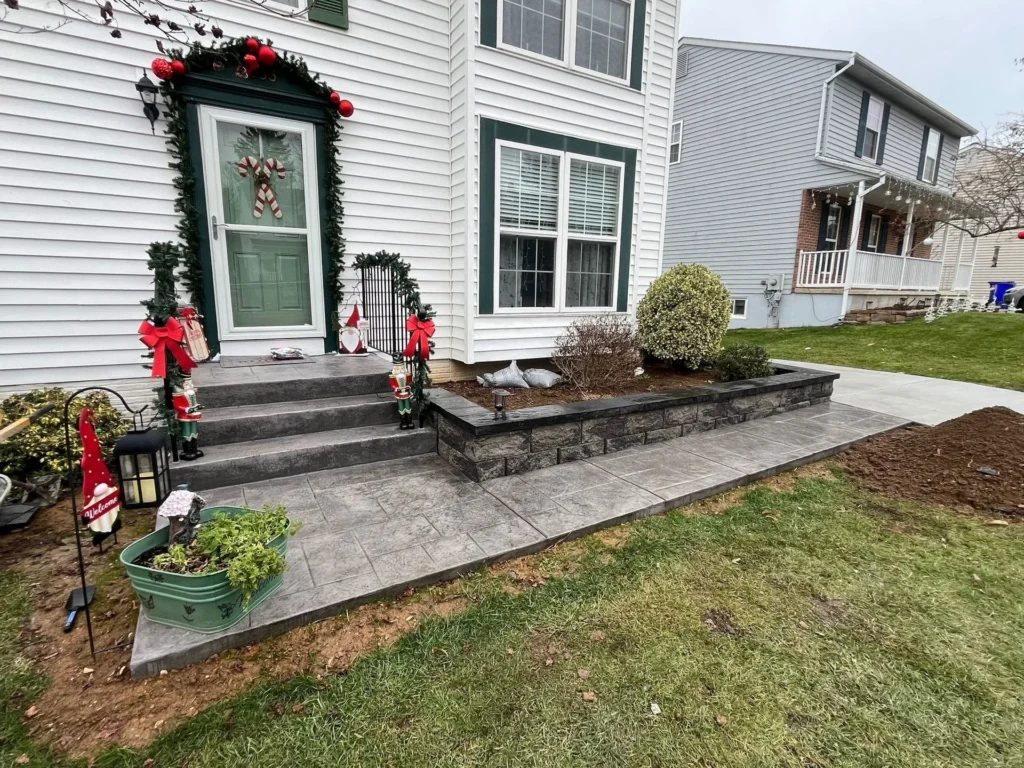The Evolution of Patio Design: From Classic Stone to Modern Outdoor Living Spaces
Enjoy Classic to Modern Patios
Patios have long been a staple of outdoor living, providing a versatile space for relaxation, socializing, and connecting with nature. Over the centuries, patio design has evolved significantly, adapting to cultural trends, technological advancements, and the changing needs of homeowners.
From the rustic charm of classic stone courtyards to the sleek, functional outdoor living spaces of today, patios have transformed into a central element of modern home design.
In this blog, we’ll explore the fascinating history of custom patio design, examine how materials, layouts, and functionalities have evolved, and highlight the trends shaping the future of outdoor living spaces.
The Origins of Patio Design: Ancient Roots
The concept of outdoor living dates back thousands of years. Early patios were simple open-air courtyards designed for practical purposes, such as providing ventilation, light, and a secure gathering space.
Ancient Mediterranean Courtyards
The word “patio” originates from the Spanish term for an inner courtyard. The design was heavily influenced by Mediterranean cultures, where open courtyards were integral to homes in ancient Greece and Rome. These spaces often featured stone or tile flooring, surrounded by columns or walls for privacy and shade. Central fountains or gardens were common, adding beauty and a cooling effect during hot summers.
Middle Eastern Influence
In the Middle East, courtyards served as private outdoor sanctuaries. These spaces were often adorned with intricate tilework, water features, and lush greenery. The design focused on creating a serene environment for relaxation and reflection, a theme that continues to influence modern custom patio aesthetics.
The Renaissance of Patios: A European Touch
During the Renaissance period, patios became more ornate and decorative, reflecting the grandeur of the era. European patios incorporated elaborate landscaping, artistic paving patterns, and architectural features like pergolas and balustrades.
The Rise of Formal Gardens
In Europe, particularly in Italy and France, patios were integrated into formal gardens. These designs emphasized symmetry and order, with patios serving as focal points for outdoor entertaining and leisure. Stone and brick were the primary materials, often laid in intricate patterns to showcase craftsmanship.
The English Cottage Garden Influence
In England, custom patios took on a more rustic charm, blending seamlessly with the natural landscape. Flagstone and cobblestone were popular materials, and patios were surrounded by lush, overflowing gardens. This style emphasized a harmonious connection between indoor and outdoor spaces.
The Patio’s Journey to America: Early 20th Century
Patio design underwent a significant transformation as it traveled to America, particularly during the early 20th century. With the rise of suburban living, patios became a staple in backyard design, offering homeowners a dedicated space for outdoor activities.
The Birth of the American Patio
In the 1920s and 1930s, patios were typically simple concrete slabs or brick platforms adjacent to the house. They were used for informal gatherings, barbecues, and outdoor dining. The focus was on functionality, with minimal decorative elements.
The Mid-Century Modern Era
The post-war boom of the 1950s and 1960s brought a new appreciation for outdoor living. Mid-century modern design emphasized clean lines, open spaces, and integration with nature. Patios became more sophisticated, featuring sleek furniture, built-in seating, and innovative materials like poured concrete and terrazzo.
The Influence of the American Dream
The suburban ideal of a backyard with a patio became synonymous with the American Dream. Families invested in custom patio furniture, grills, and landscaping, transforming their backyards into extensions of their homes.
The Rise of Modern Patio Design: Late 20th Century
By the late 20th century, patio design had evolved to prioritize comfort, aesthetics, and versatility. Advances in materials and construction techniques allowed for greater creativity and durability, while changing lifestyles influenced the way patios were used.
Material Options
- Concrete Innovations: Stamped and stained concrete gained popularity, allowing homeowners to mimic the look of natural stone or brick at a lower cost.
- Natural Stone Revival: Flagstone, slate, and travertine became go-to choices for upscale patios, offering a timeless and elegant appeal.
- Wood and Composite Decking: Patios were often combined with decks made from wood or composite materials, creating multi-level outdoor spaces.
Outdoor Kitchens and Fire Features
The late 20th century saw the introduction of outdoor kitchens and fire pits as key custom patio features. These additions made patios more functional, catering to the growing trend of entertaining outdoors.
Landscaping Integration
Patios became seamlessly integrated into the surrounding landscape, with features like retaining walls, built-in planters, and water features enhancing the overall aesthetic.
The Modern Era: Outdoor Living Redefined

In recent years, patio design has reached new heights, embracing advanced technology, sustainable practices, and a focus on creating complete outdoor living spaces. Modern patios are no longer just for occasional use—they are multifunctional areas designed for year-round enjoyment.
High-Tech Patios
Technology has transformed patio design, making outdoor spaces more convenient and enjoyable. Smart features like integrated lighting, outdoor speakers, and automated shading systems allow homeowners to customize their patios with the touch of a button. Built-in heating and cooling systems ensure comfort in all seasons.
Sustainable Materials and Practices
As eco-consciousness grows, sustainable patio materials and designs have gained popularity. Homeowners are opting for permeable pavers, recycled materials, and energy-efficient lighting to reduce their environmental impact. Rainwater collection systems and native plant landscaping further enhance sustainability.
Indoor-Outdoor Integration
Modern patios are designed to blur the lines between indoor and outdoor living. Large sliding glass doors, covered patios, and transitional spaces create a seamless flow between the home’s interior and exterior. This trend emphasizes the patio as an extension of the home, perfect for entertaining and relaxation.
Customization and Personalization
Today’s patios reflect the unique tastes and lifestyles of homeowners. Custom features like outdoor fireplaces, water walls, and themed decor make each custom patio a one-of-a-kind space. Modular furniture and adjustable layouts allow for flexibility, accommodating both intimate gatherings and large parties.
Trends Shaping the Future of Patio Design
As we look ahead, several trends are likely to influence the next generation of custom patio design:
Multifunctional Spaces
Patios are becoming more versatile, with designs that cater to multiple activities. From outdoor workstations to wellness retreats featuring yoga mats and meditation corners, patios are evolving to meet diverse needs.
Biophilic Design
Biophilic design focuses on connecting people with nature. This trend emphasizes natural materials, greenery, and water elements to create calming and rejuvenating outdoor spaces.
Outdoor Entertainment Centers
Future patios will continue to incorporate high-tech features, including outdoor TVs, projectors, and gaming systems. These elements transform patios into complete entertainment hubs for families and guests.
Climate-Adaptive Design
With climate change in mind, patio designs are incorporating features that address extreme weather conditions. Retractable enclosures, weather-resistant materials, and adaptive shading solutions ensure patios remain usable in varying climates.
Luxury Amenities
As outdoor living spaces become a priority for homeowners, luxury features like infinity-edge pools, outdoor spas, and custom lighting installations are becoming more common.
Designing Your Modern Patio
Whether you’re inspired by classic stone courtyards or sleek contemporary designs, creating a patio that suits your lifestyle and aesthetic preferences is key. Here are some tips for designing a patio that blends timeless appeal with modern functionality:
- Start with a Vision: Consider how you want to use your patio—whether for entertaining, relaxing, or a mix of activities. This will guide your design decisions.
- Choose the Right Materials: Opt for durable, low-maintenance materials that complement your home’s architecture and climate.
- Incorporate Multifunctionality: Design your patio with flexibility in mind, allowing it to adapt to different occasions and seasons.
- Invest in Comfort: Add features like shade structures, comfortable furniture, and heating or cooling elements to enhance usability.
- Personalize the Space: Incorporate elements that reflect your personality, such as custom lighting, unique decor, or a favorite color palette.
The Impact of Climate on Patio Design
As patio design evolves, one of the most critical considerations is how regional climates influence materials, layouts, and overall functionality. Designing with climate in mind ensures that patios remain durable, comfortable, and usable throughout the year.
1. Hot and Arid Climates
In regions with hot and dry weather, such as the southwestern United States, patios are often designed to provide maximum shade and cooling. Popular features include:
- Pergolas and Shade Structures: These provide relief from the intense sun, making patios more comfortable for daytime use.
- Heat-Resistant Materials: Light-colored pavers, tiles, or concrete are commonly used to reflect heat and keep surfaces cool.
- Water Features: Fountains or small pools can add a cooling element to the custom patio, creating a refreshing atmosphere.
2. Cold and Snowy Climates
In colder regions, patios are designed to withstand snow, ice, and freezing temperatures. Features that enhance usability in winter include:
- Weatherproof Materials: Durable options like sealed concrete, flagstone, or brick resist cracking caused by freeze-thaw cycles.
- Fire Features: Fire pits and outdoor fireplaces are essential for adding warmth and extending the usability of the patio during colder months.
- Covered Patios: Roofed structures or retractable enclosures protect the patio from heavy snow and make it easier to maintain.
3. Humid and Rainy Climates
In areas with high humidity and frequent rain, patios are built with features that prevent water damage and mold growth. Key considerations include:
- Drainage Systems: Proper grading and the use of permeable pavers ensure that rainwater drains away efficiently.
- Moisture-Resistant Materials: Composite decking, treated wood, and concrete are excellent choices for wet environments.
- Mold-Resistant Finishes: Sealed surfaces and mold-resistant grout help prevent mildew buildup.
4. Coastal Climates
Patios in coastal areas must contend with salt, wind, and humidity. To combat these challenges, homeowners often use:
- Corrosion-Resistant Materials: Stainless steel and aluminum are ideal for furniture and fixtures in salty air environments.
- Wind-Resilient Features: Heavy furniture and anchored shade structures ensure stability during strong winds.
- Tropical Landscaping: Native plants and hardy ground covers thrive in coastal climates, blending seamlessly with the patio’s design.
By tailoring patios to specific climates, homeowners can create outdoor spaces that are both resilient and comfortable year-round.
The Role of Landscaping in Modern Patio Design
Landscaping plays a pivotal role in enhancing the aesthetic appeal and functionality of patios. Thoughtful integration of greenery, hardscaping, and natural elements can transform a basic patio into a vibrant outdoor oasis.
1. Greenery as a Focal Point
Incorporating plants into patio design adds life, color, and texture. Popular landscaping ideas include:
- Container Gardens: Planters filled with flowers, shrubs, or even small trees create a dynamic visual impact.
- Vertical Gardens: Living walls and trellises covered with climbing plants like ivy or jasmine provide privacy and natural beauty.
- Herb Gardens: Incorporating an herb garden into the patio design adds a functional element for cooking enthusiasts.
2. Creating Natural Boundaries
Landscaping can help define patio areas, creating a sense of structure and flow. Techniques include:
- Hedges and Shrubs: Planting hedges around the patio edges acts as a natural fence, enhancing privacy.
- Retaining Walls with Built-In Planters: These serve a dual purpose, providing structural support and adding greenery to the custom patio.
- Flower Borders: Lining patios with flowerbeds or ornamental grasses softens the transition between hardscaping and the surrounding yard.
3. Enhancing Ambiance
Landscaping contributes to the overall ambiance of the patio by incorporating elements like:
- Water Features: Small fountains or ponds add a calming, tranquil vibe.
- Lighting Integration: Pathway lights, uplights, and spotlights accentuate the beauty of plants and trees while creating a warm, inviting atmosphere.
- Seasonal Interest: Choosing plants that bloom at different times of the year ensures the patio remains visually appealing throughout the seasons.
4. Sustainability in Landscaping
Modern patios often emphasize sustainability by using eco-friendly landscaping practices. These include:
- Native Plants: Choosing plants that thrive naturally in the local climate reduces water and maintenance needs.
- Rain Gardens: Installing rain gardens near the patio helps manage runoff and creates a habitat for local wildlife.
- Edible Landscaping: Incorporating fruit trees, berry bushes, or vegetable plants into the patio design adds both beauty and functionality.
Landscaping is an essential element of patio design, enhancing its visual appeal and creating a harmonious connection with the surrounding environment.
Old School or Modern Patio Design?
The evolution of patio design showcases a journey of creativity, innovation, and adaptability. From the timeless elegance of classic stone courtyards to the high-tech, multifunctional outdoor living spaces of today, patios have continually transformed to meet the changing needs and desires of homeowners. As we embrace new trends and technologies, the possibilities for patio design are endless, promising a future where outdoor spaces are as functional, beautiful, and personalized as the homes they complement.
If you’re ready to transform your outdoor space with a modern patio design, contact Brijo Concrete Solutions. Our team of experts specializes in creating custom patios that blend style, functionality, and durability, helping you bring your vision to life.




